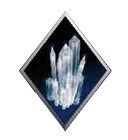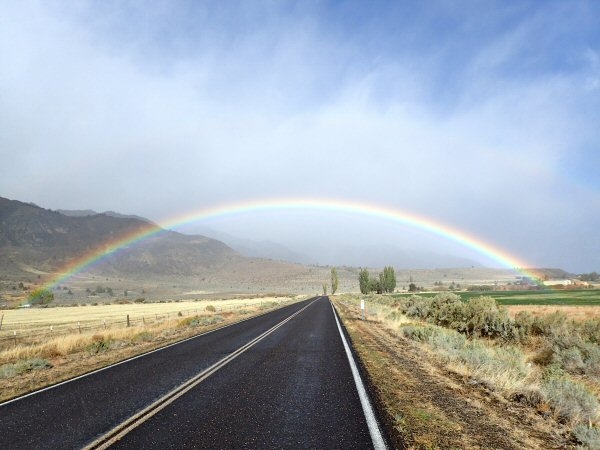
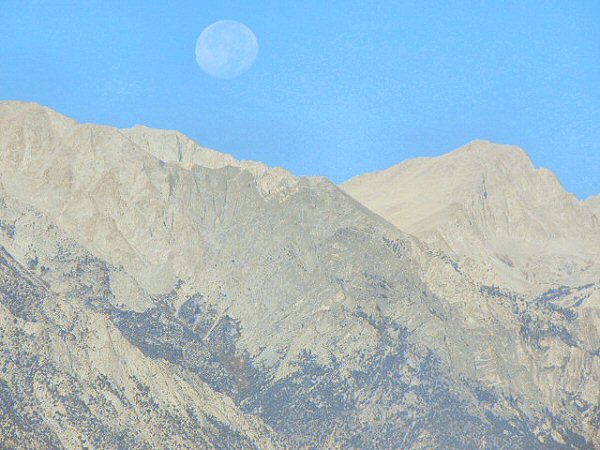
A full moon sets over the fabled Sierra Nevada Mountain Range as I head from Oregon down into Southern California in search of Trona halite and other field trips in the great rockhounding region of Owens and Searles Valleys.
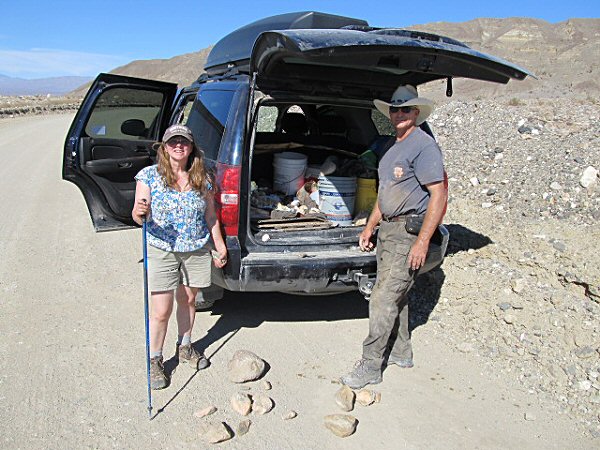
I’m joined by the intrepid Kevin and Carol Rust, who had to drive much farther than I did, coming all the way from Seattle. Here they are pulling together a pile of Ballarat marble, gathered from the gravel fans just south of the ghost town of Ballarat, at the south end of Panamint Valley.
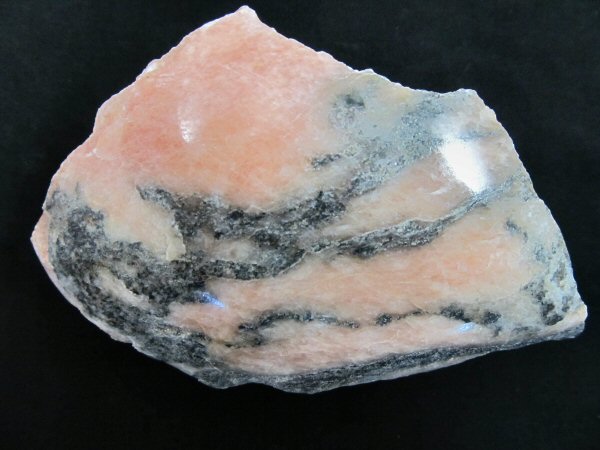
If you’re unfamiliar with this material, it’s a beautiful salmon pink marble with dark green streaking, and it takes a nice, high gloss polish.
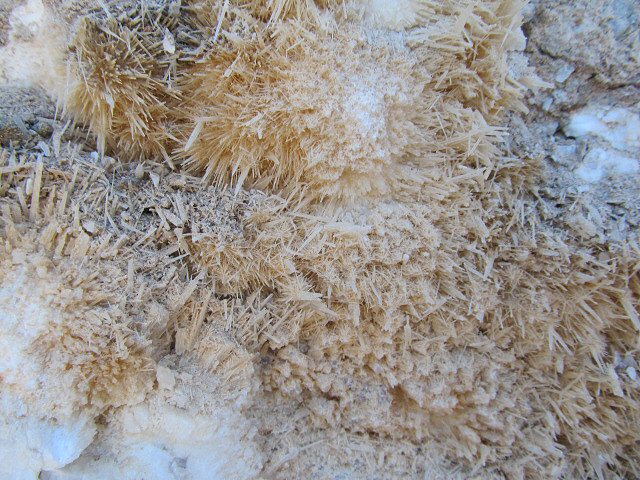
Kevin’s got a nose for rocks, and almost immediately upon heading up an unnamed canyon off the Ballarat road, He finds a deposit of natrolite. The seams are exposed, but not too damaged, just a little dusty. The rock here is laced with stringers of natrolite.
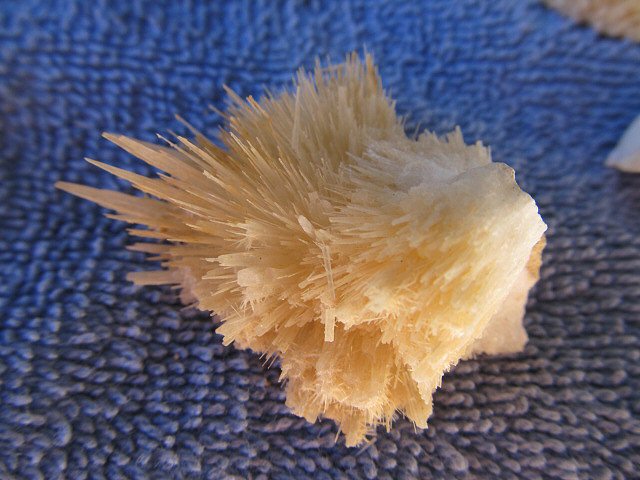
I’ve always been fascinated with this zeolite, but its delicacy does present a true challenge in getting it out of the host rock, and in from the field in one piece.
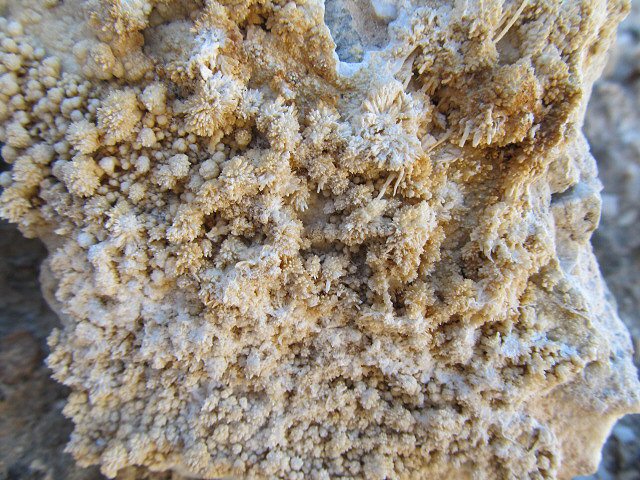
Below the main outcropping of natrolite, the deposit seems to grade into seams of a more flowery aragonite coated material very reminiscent of cave formations I have seen.
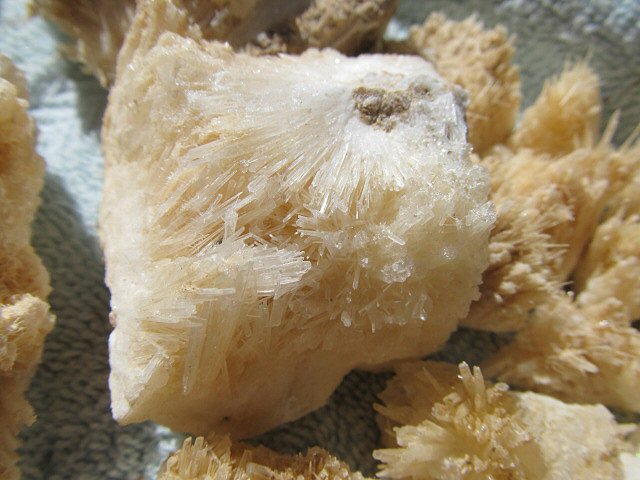
Some of the natrolite is actually fairly clean and gemmy.
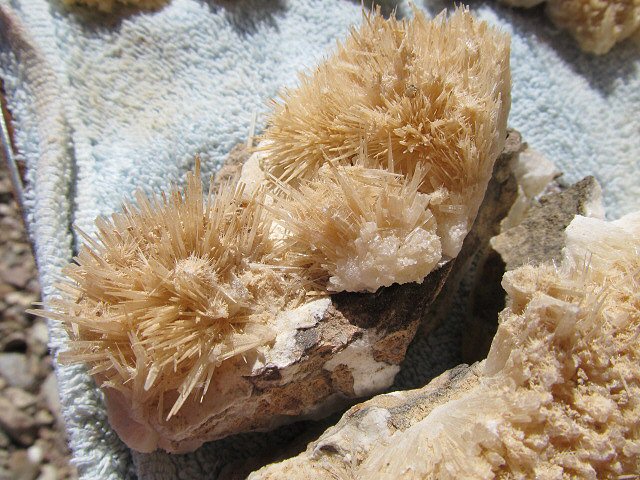
Here’s a beauty with double hedgehog mounds of radial crystalline sprays.
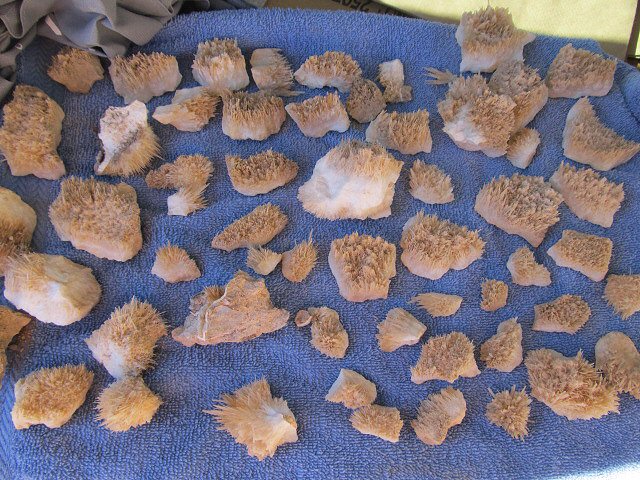
We collect up a fair amount, enjoying the silence of the canyon, and the camraderie of collecting out a pocket with enough material to make everybody happy. At some point, the rock gets a little harder to move, and we just give up, even though the seams continue to run on back into the country rock. We’ve definitely got enough!
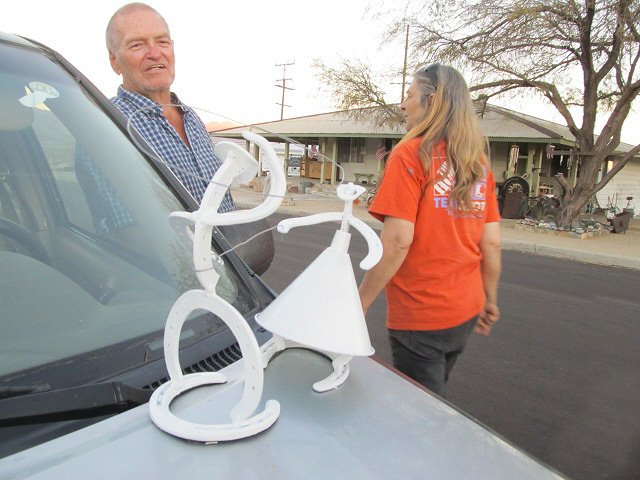
Meanwhile, back at the ranch, Trona local Gail Austin has been commissioned to create a table centerpiece for a cowboy wedding that will soon be held. The “groom” is rared up a fixin to lasso his darlin, but hold onto your spurs folks – she’s already got him bull-whipped around the midsection an he don’t even know it! (wink)
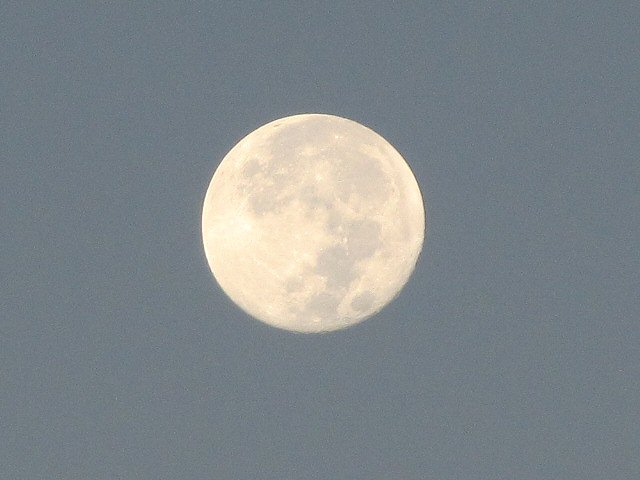
Night peacefully blankets us and an amazing bright full moon is out. I alway feel more connected to the celestial nature of existence when I am out in the desert.
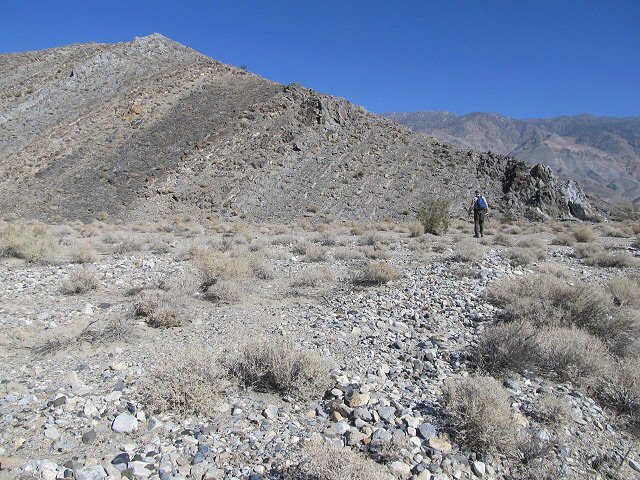
In the morning we head up to Mazourka Canyon, outside of the town of Independence. The Mazourka Canyon road heads east off of Hwy 395, and accesses the interesting north-south running canyon, with its multiple outcroppings of fossiliferous Silurian age limestone. Here Kevin Rust strikes out to explore the small hill of tilted and uplifted parallel beds of fossil bearing strata.
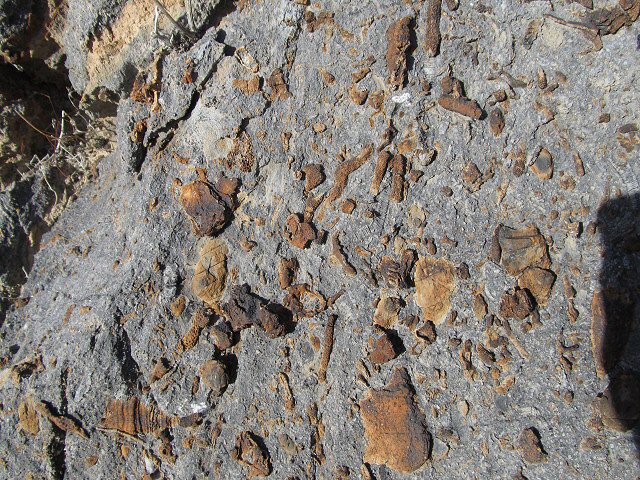
Fossils are not hard to find here. They abound on virtually just about any fin of exposed limestone. Most are sponges and colonial coral.
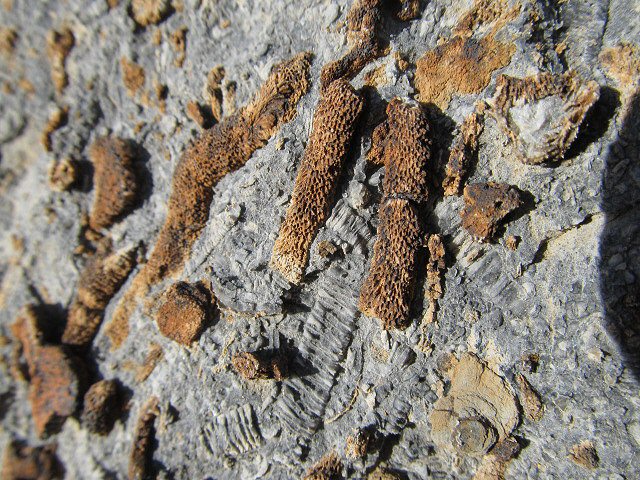
Multiple coral branches with quite good detail network across the rock, and stand out in bas-relief, having been partially etched from the encasing limestone by centuries of rains and weathering.
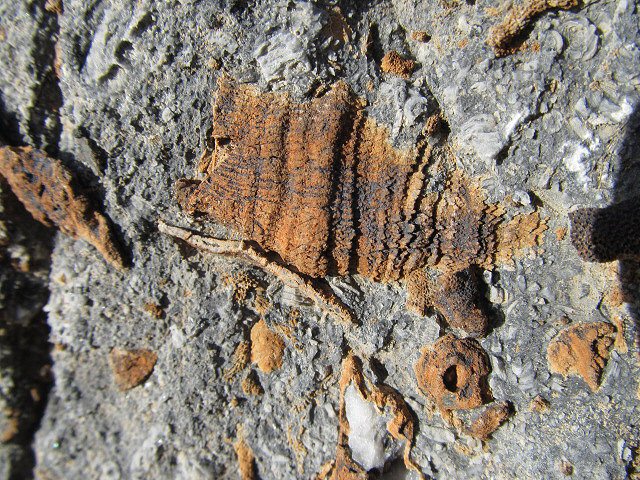
A horn coral floats among the debris of an ancient sea floor, some 425 million years old.

Ascending through a Silurian sea bed. There’s more rock here than we can possibly look at. Multiple fins of black limestone erupt and cover the hillside, and this is only one of the exposures that Mazourka Canyon holds.
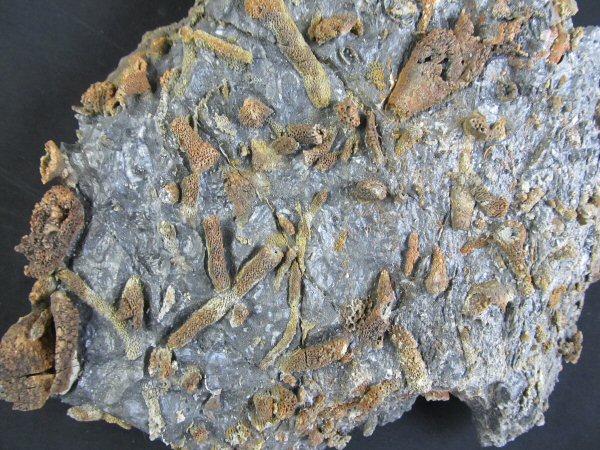
Once I got some of these pieces back home, I etched away some of the limestone with hydrochloric acid (Muriatic acid) to reveal a little more of the coral.
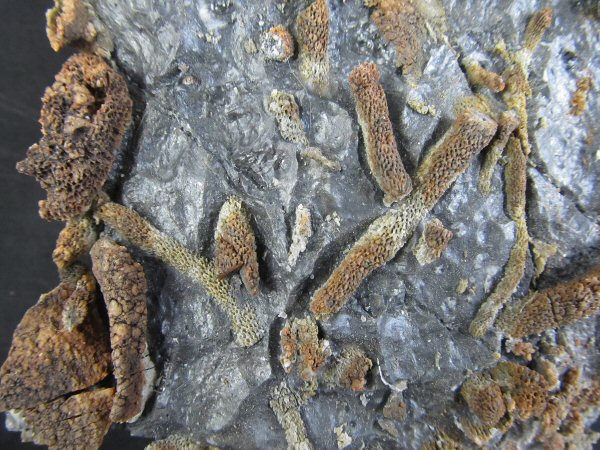
After something like 5 or 10 minutes of acid washing, the lovely detail of the myriad corals and sponges of the primordial ocean becomes more visible, allowing you to “create” some very nice display pieces.
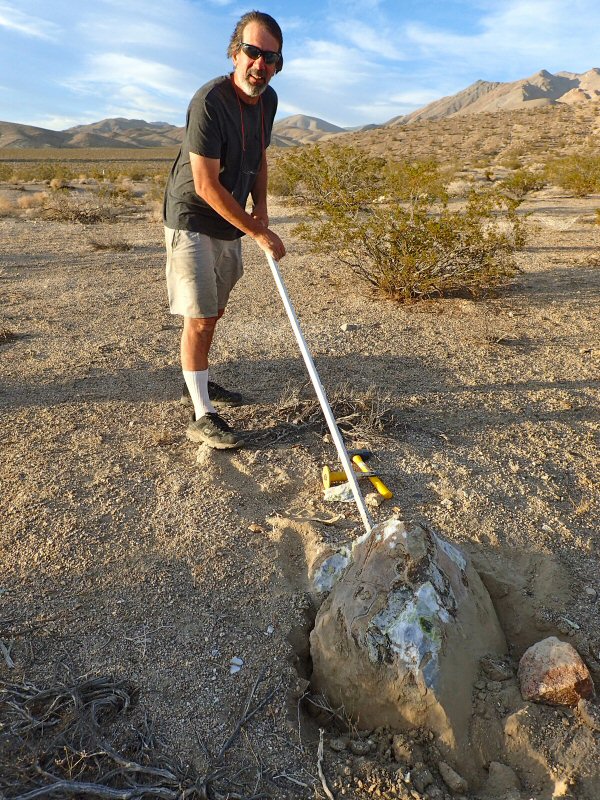
Back out front on the Owens Valley floor, Kevin has discovered a suspicious looking boulder. It’s some type of marble with bright lime green streaking. I get after it with my pry bar!
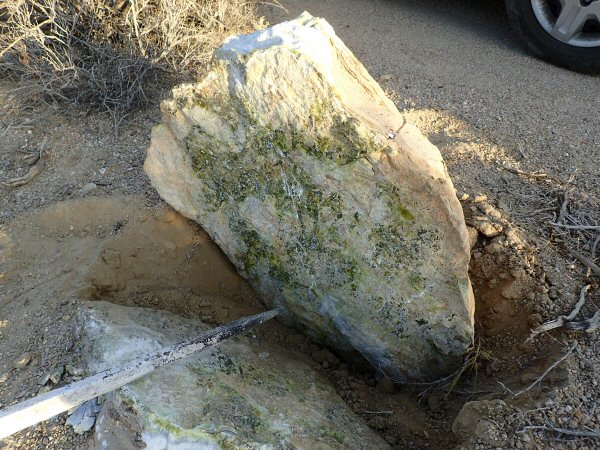
In her little known, and out of print book, “Where to Find Rocks in the Owens Valley”, Irma Kittle mentions that there is green opal somewhere out on the Mazourka Canyon road. Could this be what she is talking about? I get out my hammer and chisel and beat on the mighty boulder with all my strength. To my delight, the boulder almost magically splits in half along a green seam, revealing an interior laced with the fine green color.
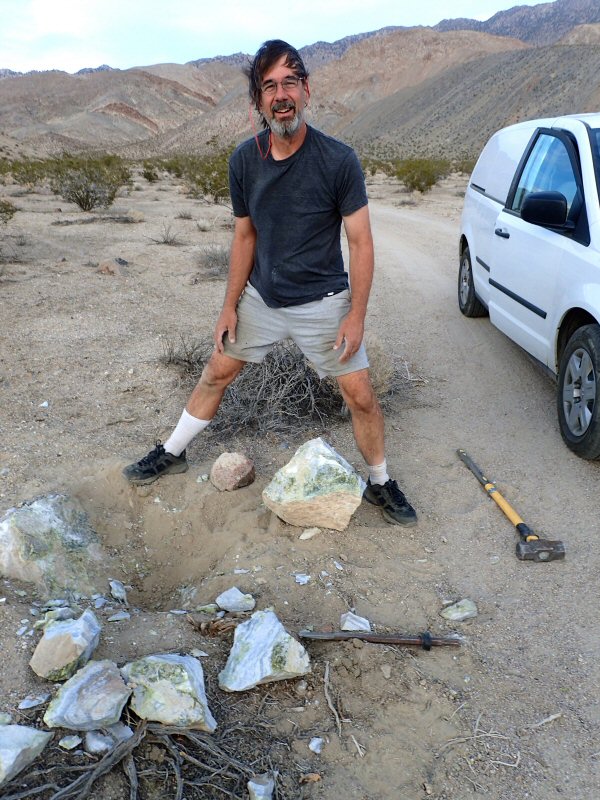
With my manly factor dangerously elevated from boulder splitting success, I set about breaking down the boulder halves into more manageable chunks. For the sake of our survivors, we saved a few requisite “giant chunks” which took all the muscle that Kevin and I had to get up into the rig. Oregon rockhound Jack Benedict has noted that these apparently impossible acts are done with “brute strength and ignorance”. I don’t fully understand it, but there is some old rockhounding tradition that requires one to pepper their pile with chunks too big to fit in any saw, evidently for the sheer purpose of confounding their survivors after the crusty ole rockhound passes on.
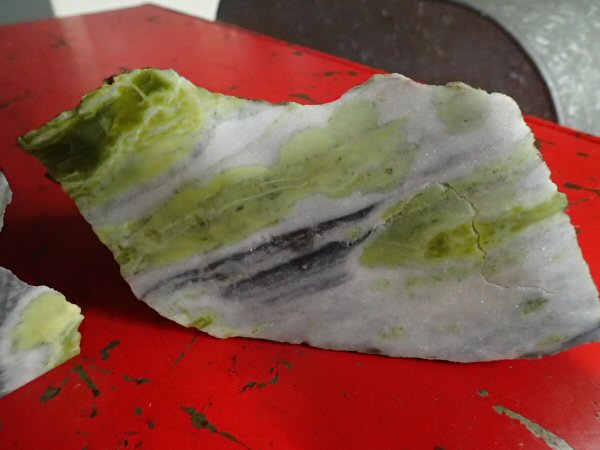
Once cut though, you can see that this is a truly beautiful material and we were lucky to find, and be able to collect the giant boulder. Upon seeing this rock, an old timer identified it as “Verdi Antique” marble, and said that the green is a nice, translucent variety of serpentine, which means that Irma Kittle’s green opal must be still lying out there somewhere in the canyon!

We pack up and part ways, with me heading over to the Kern River and the famous Ant Hill fossil bone beds, and the Rust’s heading north along the rainbow road.
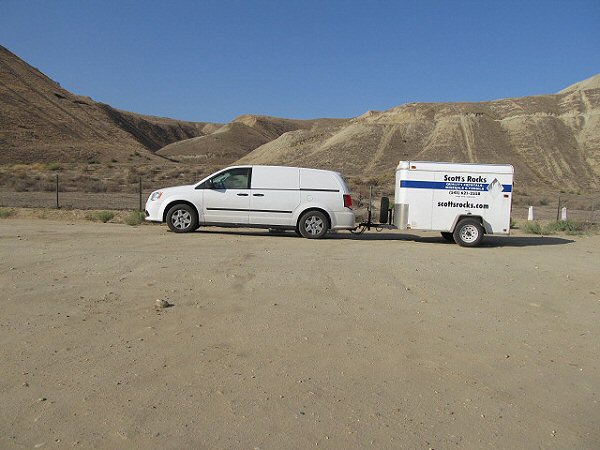
Scott’s Rock & Gem arrives at the Ant Hill!
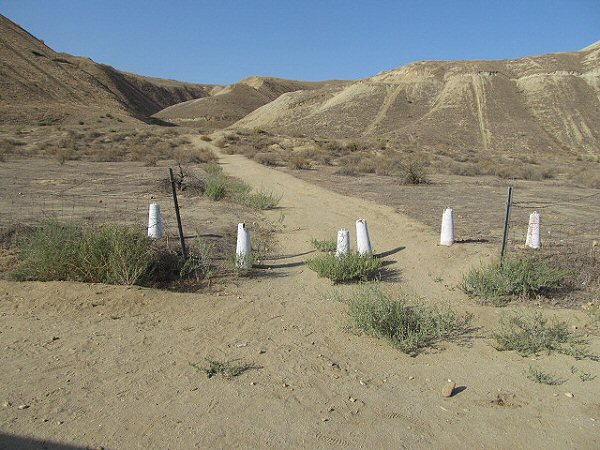
Though the land is under private ownership here, access for fossil digging was open when I visited during the second weekend of October, 2014. However,it does seem to be hit and miss. I have heard that this same gate that I walked through is currently strung with more barbed wire than the Berlin Wall. The hills in the background have seen some epic digging at the proper horizon by scores of fossil hounds, and the trenches appear like a roadcut near the top of the front hill, and dip down, following the layer to near the base of the back hill.

Here, a set of marine mammal ribs is exposed in the sandstone of the Round Mountain Silt formation, which is of Miocene age and is dated at 18 to 13 million years ago.
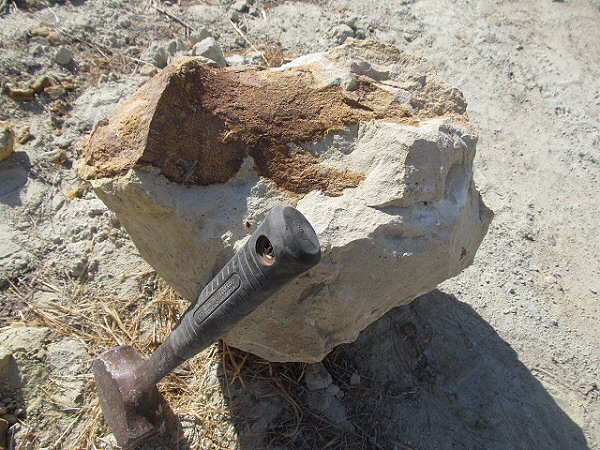
It doesn’t take me long to pull out a large whale bone partial – probably pelvis section, encased in rock. I’ll carefully chip back some of the surrounding rock, to reveal the bone more fully and it will make an awesome display piece!
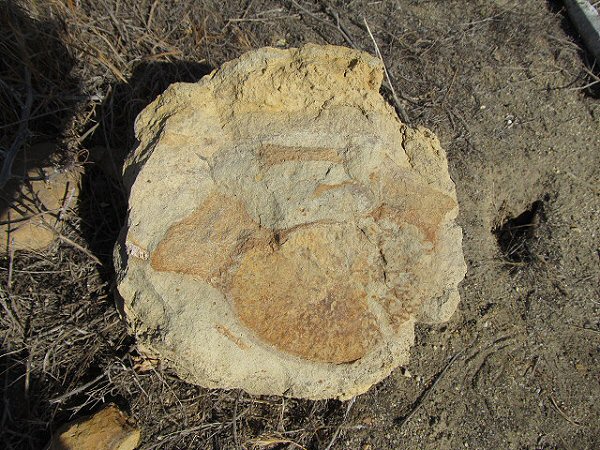
Almost every concretion in the layer contains miscellaneous marine mammal bone fragments. One large concretion that I split reveals an entire whale vertebra.
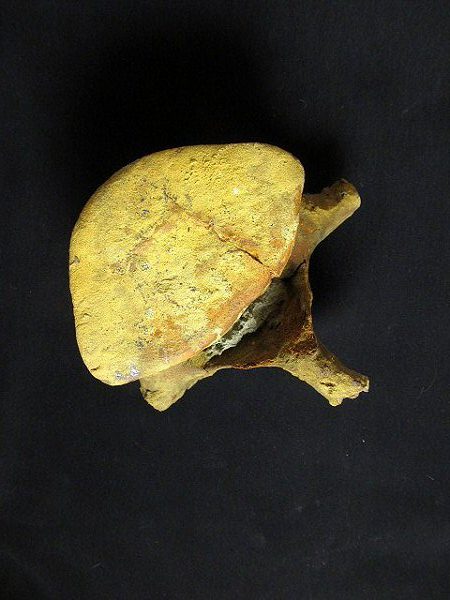
The consistency of the rock grades into more soft, moveable sediments in some areas and I am able to recover this beautiful whale vertebra with great spiny processes largely intact.

A nice partial shark tooth with good complete tip appears out of the sediment.
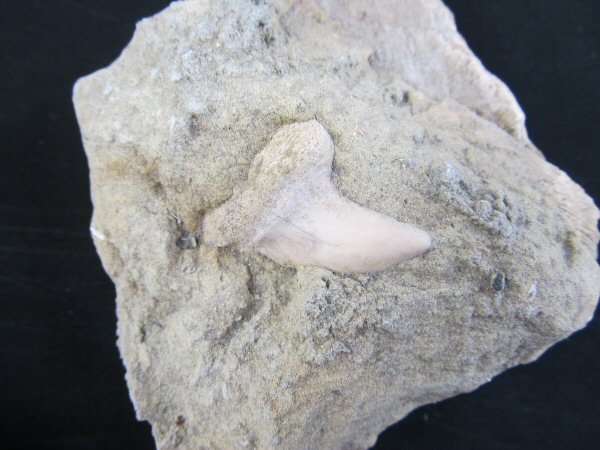
Here’s a beautiful complete tooth in matrix. Hard to see in the photo, but there is a section of a marine mammal bone just underneath the tooth – a great sample piece showing a combo of fossils.
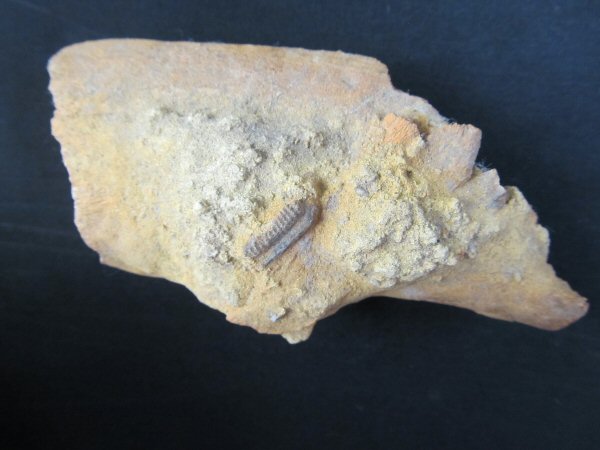
I recommend paying attention to the small details at this site. Here, a tiny bony plate from the jaw of a fish or small shark is cemented onto the sediments attached to a rib bone section.
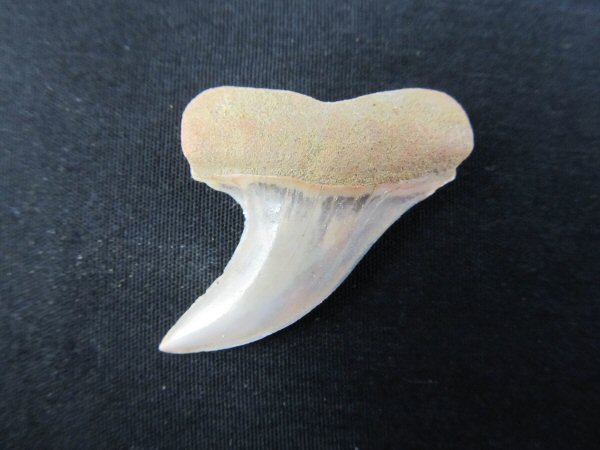
A gorgeous full tooth shows it’s ferocious and deadly curve.
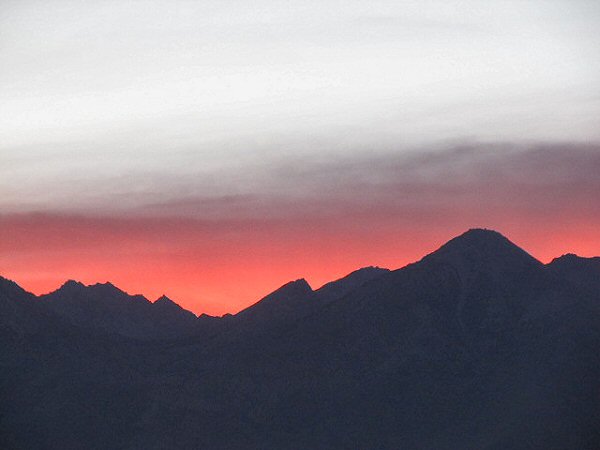
I enjoy a peaceful evening sunset, rich with changing colors that are hard to name. In the following days, I head north to Placerville, and connect with a rockhound friend of mine who has made an important find of large, beautiful plates of druzy quartz on a brecciated serpentine matrix, near Washington, California. What follows are some photos of these wonderful specimens.
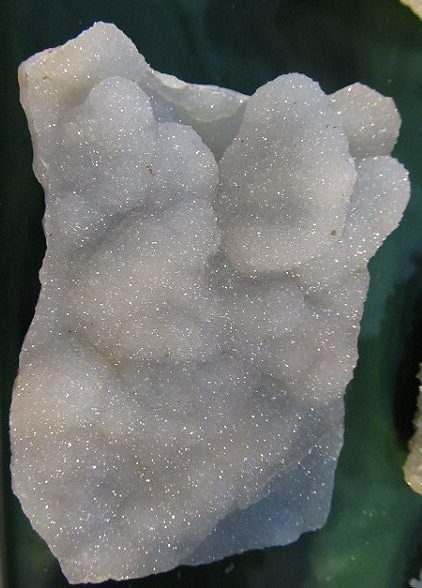
This druze has a very bright sparkle that is not conveyed by the camera!
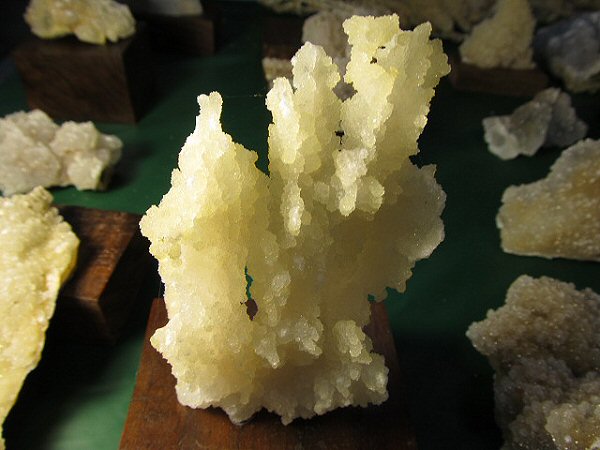
Some amazingly sculptural and frothy pieces have been recovered.
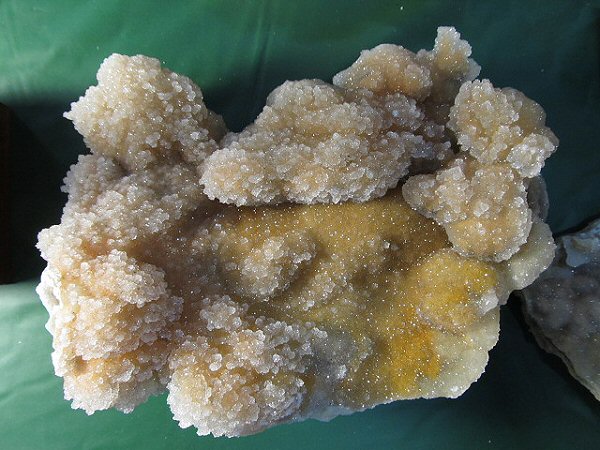
Beautiful sub-surface colors lend blues, pinks, yellows, and greens to the various pieces.
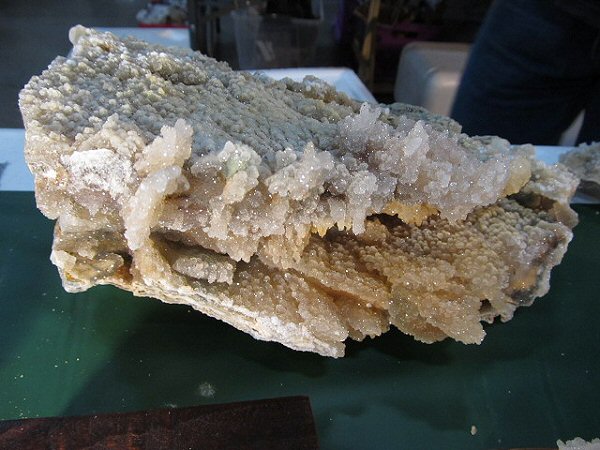
Large, multi-layered pieces adorned with bright chalcedony icicles are my favorites.
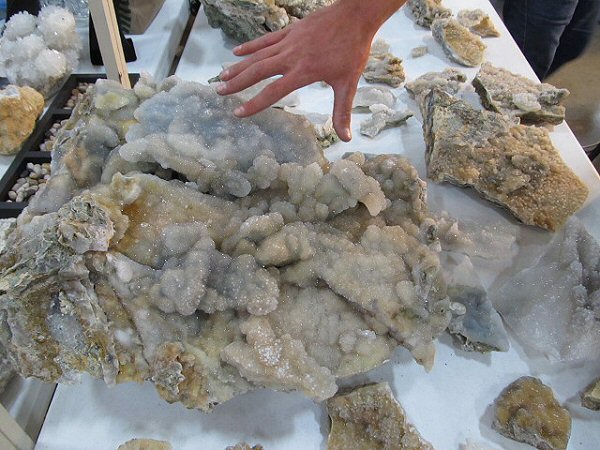
How about this monster museum piece?
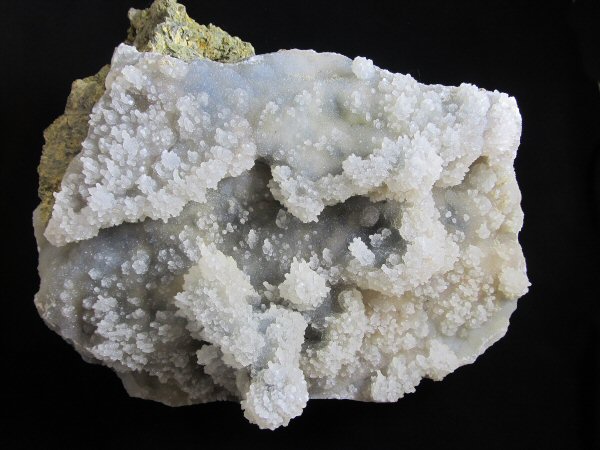
Once again, I am amazed at the things that vigilant and persistent rockhounds are bringing in out of the field these days. Makes me want to get back out there as soon as I can! Happy Rockhounding!
